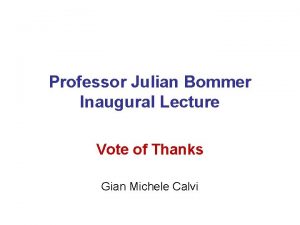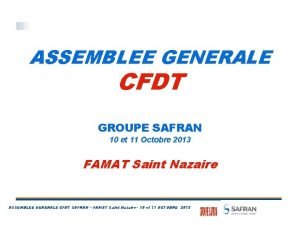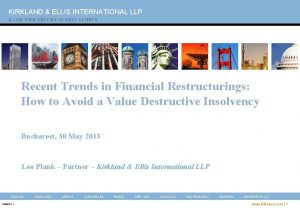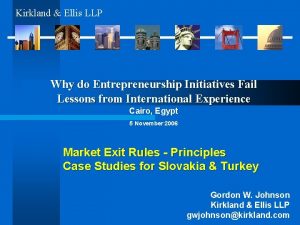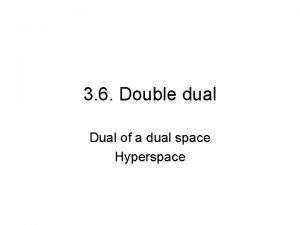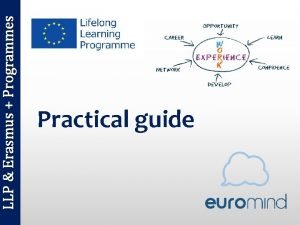KIRKLAND ELLIS LLP Dual Vote Structures Stephen Fraidin
















- Slides: 16

KIRKLAND & ELLIS LLP Dual Vote Structures Stephen Fraidin June 27, 2006 Chicago London Los Angeles Munich New York San Francisco Washington D. C.

Some of the issues presented by the paper: • Does a dual voting structure ever (or always) promote efficiency gains? • Are there particular dual voting structures that are unlikely to add value (e. g. legacy shares)? • Do holders of high voting stock receive premiums? Under what circumstances? If not, why not? 1

My comments • Differences among dual voting structures • Certain empirical data regarding premiums paid in dual voting structures in 2 contexts: – Acquisitions – Recapitalizations • Why is there always a premium in recapitalizations? • Why is there a premium in only about 25% of the acquisition transactions? • Why have there been so few attempts to acquire control by acquiring high vote stocks? 2

Differences Among Dual Voting Structures • High vote stock has high vote on all matters • High vote stock loses high vote on certain matters - sale of the company - “going private” transactions • Transferability of high vote aspect - fully transferable - automatic conversion into low vote stock or transfer “out of family” 3

Differences Among Dual Voting Structures (continued) - automatic conversion of non-transferred stock when a certain percentage of high vote stock has been transferred - increasing vote, depending on length of time stock is held Pages 5 -11 of these are based on materials prepared by Peter J. Solomon Company takes no responsibility for any of my observations based on this data and, since the data was prepared some time ago, makes no representation that the date is complete or accurate as of June 27, 2006 4

Summary Dual Class Share Acquisitions (a) Premium Paid (9 identified) Significant Shareholder (32 identified / 9 w/ premiums) No Premium Restrictions (36 identified) No Premium Paid (23 identified) No Significant Shareholder (4 identified / 1 w/ premiums) Acquisition Transactions (55 identified) Premium Restrictions (19 identified) Note: The information herein has been prepared based on a review of selected publicly available materials. Restrictions may be included in other documents not viewed in connection with this review. (a) Acquisitions of companies with dual class shares since January 1, 1995. (b) Premium to low vote calculated as consideration offered to high vote shares in excess of low vote share price at transaction. Premium to equity calculated as premium to high vote shares in excess of the company’s total equity value. Mean and Median for deals where a premium was paid. 5

No Restrictions on Unequal Merger Consideration / Significant Shareholder (a) / Premium Paid to High Vote Shares (Dollars in Millions) Note: The information herein has been prepared based on a review of selected publicly available materials. Restrictions may be included in other operative documents not viewed in connection with this review. Source: Securities Data Corporation, public filings, company press releases and other publicly available information. (a) Significant shareholder defined as having greater than 20% voting interest. (b) Premium paid calculated as consideration offered to high vote shares in excess of low vote share price at transaction. (c) Superior board rights held by high vote. (d) Equity value does not include $5. 5 bb buy back of AT&T shares issued to TCI as part of another pending transaction. 6

No Restrictions on Unequal Merger Consideration / Significant Shareholder (a) / No Premium Paid To High Vote Shares (Dollars in Millions) Note: The information herein has been prepared based on a review of selected publicly available materials. Restrictions may be included in other operative documents not viewed in connection with this review. Source: Securities Data Corporation, public filings, company press releases and other publicly available information. (a) Significant shareholder defined as having greater than 20% voting interest. (b) Superior board rights held by high vote. 7

No Restrictions on Unequal Merger Consideration / No Significant Shareholder (a) (Dollars in Millions) Note: The information herein has been prepared based on a review of selected publicly available materials. Restrictions may be included in other operative documents not viewed in connection with this review. Source: Securities Data Corporation, public filings, company press releases and other publicly available information. (a) Premium paid calculated as consideration offered to high vote shares in excess of low vote share price at transaction. (b) Superior board rights held by high vote. 8

Restrictions on Unequal Merger Consideration (Dollars in Millions) Note: The information herein has been prepared based on a review of selected publicly available materials. Restrictions may be included in other documents not viewed in connection with this review. 9

Summary Dual Class Share Recapitalizations Relinquishment of Control (11 identified / 11 w/ premiums) Significant Shareholder (23 identified) No Relinquishment of Control 12 identified / 4 w/ premiums) Recapitalization Transactions (36 identified) No Significant Shareholder (12 identified / 0 w/ premiums) Note: The information herein has been prepared based on a review of selected publicly available materials. Restrictions may be included in other documents not viewed in connection with this review. (a) Acquisitions of companies with dual class shares since January 1, 1995. (b) Premium to low vote calculated as consideration offered to high vote shares in excess of low vote share price at transaction. Premium to equity calculated as premium to high vote shares in excess of the company’s total equity value. Mean and Median for deals where a premium was paid. 10

Significant Shareholder Does Not Relinquish Effective Control (a) (Dollars in Millions) Note: The information herein has been prepared based on a review of selected publicly available materials. Restrictions may be included in other operative documents not viewed in connection with this review. Note: Dual class recapitalizations with a significant shareholder (greater than 20% voting interest), since January 1, 1998. Source: Securities Data Corporation, public filings, company press releases and other publicly available information. (a) Relinquishment of control defined as a decrease in voting interest below 50%, loss of board control or greater than a 15% absolute decrease in a significant shareholder’s voting interest. (b) Premium paid calculated as consideration offered to high vote shares in excess of low vote share price at transaction (“ 1 Day”) and over previous 30 calendar days (“ 30 Day Avg. ”) (c) Superior board rights held by high vote. (d) Transfer restrictions for high vote. (e) Revised recapitalization agreement as a result of Mason Capital resistance following Kaman prior proposals on June 7, 2005 and July 22, 2005. (f) Revised recapitalization agreement following litigation over previous proposal made on April 15, 2002. 11

Significant Shareholder Does Not Relinquish Effective Control (a) (Dollars in Millions) Note: The information herein has been prepared based on a review of selected publicly available materials. Restrictions may be included in other operative documents not viewed in connection with this review. Note: Dual class recapitalizations with a significant shareholder (greater than 20% voting interest), since January 1, 1998. Source: Securities Data Corporation, public filings, company press releases and other publicly available information. (a) Relinquishment of control defined as a decrease in voting interest below 50%, loss of board control or greater than a 15% absolute decrease in a significant shareholder’s voting interest. (b) Premium paid calculated as consideration offered to high vote shares in excess of low vote share price at transaction (“ 1 Day’) and over previous 30 calendar days (“ 30 Day Avg. ”) (c) Superior board rights held by high vote. (d) Transfer restrictions for high vote. (e) Significant shareholder had to reduce voting stock ownership to no more than 50% to avoid the imposition of excise taxes. 12

Why is there always a recapitalization premium? • Control shareholder is surrendering control • An entirely voluntary act by control shareholder – no fiduciary duty involved • Low vote shareholders are not disadvantaged Why is the premium in recapitalizations so low? • No other shareholder receives a premium • Risk of shareholder litigations • Social factors 13

Why is there a premium paid to high vote stock in “only” 25% of the acquisition transactions • All shareholders – including the high vote shareholders – receive a premium • Plaintiffs focus on acquisition transactions high risk of litigation • Social factors • The TCI case 14

High Premium Situations • Methode – Dura • Kaman – Mason Why only 2 “bust up” attempts? • Case law regarding related party transactions • Information issues • Social factors 15
 Www.kent.k12.wa.us frequently used links
Www.kent.k12.wa.us frequently used links Vance kirkland paintings
Vance kirkland paintings Colgajo de widman modificado pasos
Colgajo de widman modificado pasos Gingivectomy steps
Gingivectomy steps Syngenta corn herbicides
Syngenta corn herbicides Human arm and whale flipper function
Human arm and whale flipper function Your vote your choice
Your vote your choice Why is this political cartoon called “one less vote?”
Why is this political cartoon called “one less vote?” Vote democracy
Vote democracy Vote of thanks speech
Vote of thanks speech Turn in your homework
Turn in your homework The first vote
The first vote Gyro error
Gyro error Met 3. hali
Met 3. hali Arachnoiditis treatment
Arachnoiditis treatment Cfdt safran
Cfdt safran Boitier vote interactif powerpoint
Boitier vote interactif powerpoint









